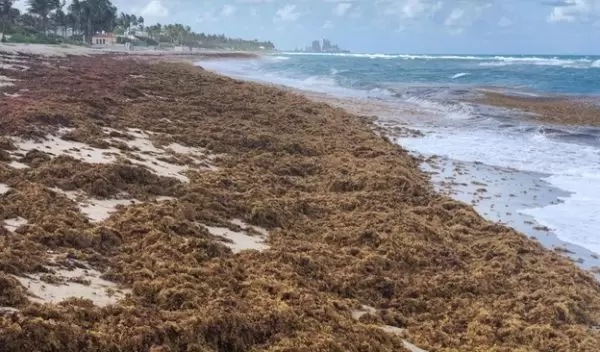
Surge in nitrogen has turned Sargassum into the world's largest harmful algal bloom
For centuries, pelagic Sargassum, a floating brown seaweed, has grown in low nutrient waters of the North Atlantic Ocean, supported by natural nutrient sources such as excretions from fish and invertebrates, upwelling, and nitrogen fixation.
Using a unique historical baseline from the 1980s and comparing it to samples collected since 2010, researchers at Florida Atlantic University and collaborators have discovered dramatic changes in the chemistry and composition of Sargassum that have transformed this vibrant living organism into a toxic "dead zone."
The findings of the U.S. National Science Foundation-funded research, published in Nature Communications, suggest that increased nitrogen availability from natural and human sources, such as sewage, is supporting blooms of Sargassum and turning a critical nursery habitat into harmful algal blooms with catastrophic impacts on coastal ecosystems, economies and human health. Globally, harmful algal blooms are related to increased nutrient pollution.
The study, led by Florida Atlantic University, in collaboration with the University of South Florida, Woods Hole Oceanographic Institution, the University of Southern Mississippi and Florida State University, was designed to better understand the effects of nitrogen and phosphorus supply on Sargassum. Researchers used a baseline tissue data set of carbon, nitrogen and phosphorus and their ratios from the 1980s and compared it with samples collected since 2010.
Results show that from the 1980s to the 2010s, the percentage of nitrogen in Sargassum tissue increased 35%, while phosphorus decreased 42%. In addition to the changes in composition were changes in the ratios, the most significant a 111% increase in the ratio of nitrogen to phosphorus. Carbon to phosphorous ratios increased by 78%.
"Data from our study support not only a primary role for phosphorus limitation of productivity, but also suggest that the role of phosphorus as a limiting nutrient is being strengthened by relatively large increases in environmental nitrogen supply from terrestrial runoff, atmospheric inputs, and possibly other natural sources such as nitrogen fixation," said Brian Lapointe, senior author and a scientist at Florida Atlantic University Harbor Branch.
Added Mike Sieracki, a program director in NSF's Division of Ocean Sciences, "Humans are now changing elemental pathways, like carbon and nitrogen cycles, at global scales and we are seeing new consequences at the level of whole ocean basins, rather than just local impacts."
